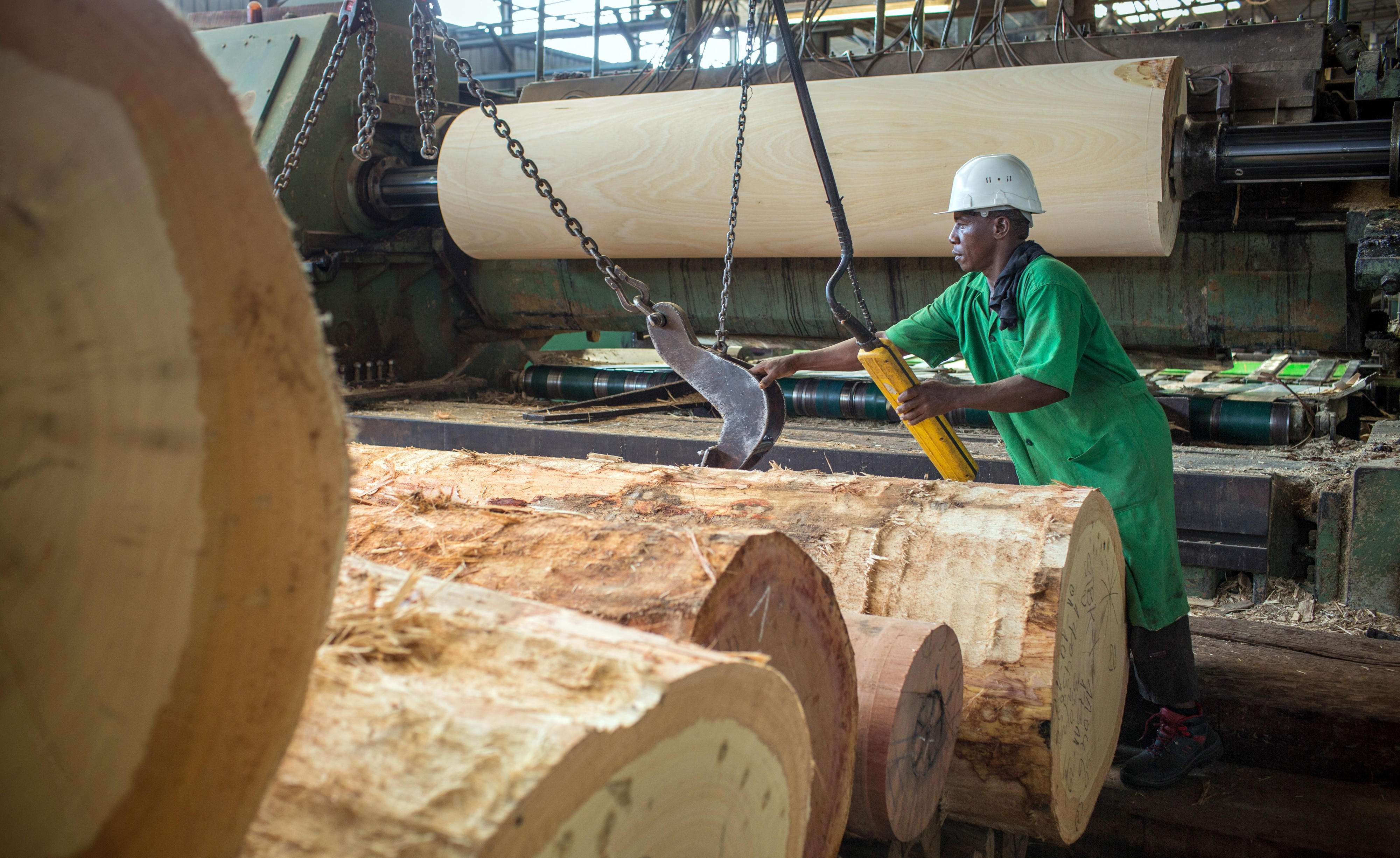Veneer production in Douala, Cameroon
Copyright© Thomas Imo/photothek.net
Economic situation Urgent need for jobs
The level of industrialisation in Cameroon has been low so far. A cumbersome administrative system, the lack of legal certainty, prevalent corruption, inadequate infrastructure, a lack of skilled workers and the crisis regions in the northern and western parts of the country act as disincentives for potential investors.
Not enough economic growth
Between 2015 and 2019, growth rates in Cameroon ranged from 3.5 to 5.7 per cent. In 2022, growth dropped to 0.3 per cent due to the COVID-19 pandemic (as a result of factors such as disrupted supply chains for coffee and cocoa) and lower world market prices for oil. In 2022, gross domestic product rose again by 3.6 per cent.
The International Monetary Fund (IMF) expects growth rates of four to five per cent for the next few years. In view of the high rate of population growth (2.6 per cent in 2022), this will not be enough to reduce poverty on a sustained basis, close the development divide between different regions of the country, and give young people better opportunities. More than 40 per cent of the people are under the age of 15.
EU Partnership Agreement
In 2014, an Interim Economic Partnership Agreement (EPA) entered into force between the European Union and Cameroon. On the basis of that Agreement, the EU grants Cameroon free market access. The Agreement lays down that Cameroon should open its market for European exports by 2029. The bilateral Agreement is viewed as a step towards a regional agreement between the Central African region and the EU.
As at: 27/02/2024
